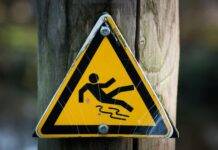
OSHA Railing Requirements
Workplace safety is a paramount concern for every organization. One crucial aspect of ensuring safety in various work environments is complying with the Occupational Safety and Health Administration (OSHA) railing requirements. Understanding these standards, their impact, and how to meet them is essential for safeguarding employees and minimizing workplace accidents.
Introduction to OSHA Railing Requirements
OSHA plays a pivotal role in setting guidelines and standards to maintain a safe working environment across industries. Railing requirements, specifically outlined by OSHA, are designed to prevent falls and provide structural support in elevated areas within workplaces.
Understanding OSHA Railing Standards
Different industries have specific standards to follow, considering the nature of work and potential risks involved. These standards encompass factors like railing height, load-bearing capacities, and materials used, ensuring the safety of employees and visitors.
The Occupational Safety and Health Administration (OSHA) has specific requirements for railings used in workplaces to ensure employee safety. Here are some general guidelines:- Height: Railings must be at least 42 inches tall from the upper surface of the top rail to the floor, platform, or any other surface below.
- Strength: Railings should be able to withstand a force of at least 200 pounds applied in any direction at any point along the top edge.
- Spacing: Any openings in the railing (such as between vertical rails or beneath the bottom rail) should be small enough to prevent a sphere of 4 inches in diameter from passing through.
- Top Rail: The top rail should be smooth-surfaced to prevent injuries and should be able to support employees leaning against it without collapsing.
- Mid-Rails and Toeboards: If the railing is over 4 feet high, there should be a mid-rail approximately halfway between the top rail and the floor. Toeboards are required if there is a hazard of objects falling to lower levels.
- Construction: Railings should be constructed from durable materials, such as steel or wood, and should be securely attached to the supporting structure.
Remember, these are general guidelines, and specific requirements might vary based on the nature of the workplace or industry. It's crucial to refer to OSHA standards and regulations for your specific situation to ensure compliance and safety.Types of Railing Systems
Railing systems vary in materials and design, tailored to meet the needs of different industries while aligning with OSHA specifications. Understanding these variations aids in choosing the most suitable system for a particular workplace.
Installation and Maintenance Guidelines
Proper installation and regular maintenance are vital for compliance. Following OSHA’s guidelines during installation and conducting routine inspections ensure ongoing adherence to regulations.
Impact on Workplace Safety
Statistics reveal that failures in railing systems contribute significantly to workplace accidents. Adhering to OSHA standards mitigates these risks, promoting a safer work environment.
Benefits of Compliance
Complying with OSHA standards not only prioritizes safety but also shields organizations from penalties and legal consequences. It fosters a culture of safety and well-being among employees.
Common Mistakes and How to Avoid Them
Errors in installation and maintenance are common pitfalls. Addressing these mistakes prevents compliance issues and potential hazards.
Future Trends in Railing Requirements
Innovations in railing systems are anticipated to align with evolving OSHA guidelines, enhancing workplace safety further.
Conclusion
Adherence to OSHA railing requirements is non-negotiable for workplace safety. It’s not just about compliance; it’s about valuing lives and creating a secure environment for everyone involved.
OSHA Fall Protection Requirements
OSHA Anchor Point Requirements
Full Body Harness 100% Tie Off
FAQs
- Do OSHA railing requirements apply to all industries? Yes, OSHA railing requirements are industry-specific. Different industries have distinct standards based on the nature of work and potential risks involved. It’s crucial for organizations to adhere to the specific guidelines relevant to their industry.
- What are the consequences of non-compliance with OSHA standards? Non-compliance with OSHA standards can result in severe penalties, fines, and legal repercussions. Moreover, it poses a significant risk to employee safety and can lead to workplace accidents.
- Can companies customize railing systems while meeting OSHA requirements? Yes, companies can customize railing systems to suit their specific needs while still ensuring compliance with OSHA requirements. However, it’s essential to ensure that any customization maintains or exceeds the necessary safety standards set by OSHA.
- Where can one find resources for OSHA railing compliance training? Resources for OSHA railing compliance training can be found through OSHA’s official website, industry-specific associations, certified trainers, and safety education programs. These resources provide comprehensive guidance on meeting OSHA standards.
- Are there penalties for not conducting regular railing maintenance? Yes, neglecting regular railing maintenance can lead to non-compliance with OSHA standards, which may result in penalties and fines. Regular inspections and maintenance are crucial to ensure ongoing adherence to safety regulations.
























